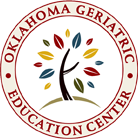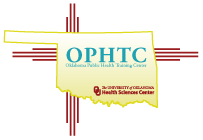

Communicating With Patients With Alzheimer's Disease or Other Dementias
OBJECTIVES
- Demonstrate appropriate communication techniques to engage patient's with Alzheimer's disease or other dementias
- Illustrate suitable body language to use when working with a patient with Alzheimer's disease or other dementia
ACTIVITIES
Alzheimer's disease gradually robs a person's ability to communicate effectively. As the disease progresses, individuals becomes more forgetful and they often have difficulty expressing themselves. Some common communication obstacles include finding the right word or words, repeating words, losing a train of thought, difficulty with logic, reverting to a native language, and using gestures instead of words. The inability to communicate may lead to frustration for the caregiver and the person with Alzheimer's. Yet no matter what the stage of the illness, there are steps that can be taken to help keep the lines of communication open.
Read- Learning to Speak Alzheimer's: A Groundbreaking Approach for Everyone Dealing with the Disease
Joanne Koenig Coste, Houghton Mifflin Company, 2003.
- From the Front Line: Conversations With Caregivers of Patient's With Alzheimer's Disease (video)
available at the OkGEC YouTube Channel: http://www.youtube.com/watch?v=M12_trRQfM0
Write a 2 page paper and include the following:
- A brief synopsis of the contents (of the book)
- Three communication tips you feel you could use with patients (from the book or video)
- Three suggestions for improving the patient's physical environment to facilitate better
communication - Submit the paper to your program mentor.
Through a special grant from the Health Resources and Services Administration (HRSA) the Oklahoma Geriatric Education Center is able to provide a complimentary copy of the book Learning to Speak Alzheimer's (as long as supplies last) to:
- Degreed, licensed professionals I.E., nurses, social workers, etc. enrolled in the AGE program
- Nursing homes and other organizations who have staff enrolled in the AGE program
- Schools with students enrolled in the AGE program
Contact jeanene-lindsey@ouhsc.edu for further information


